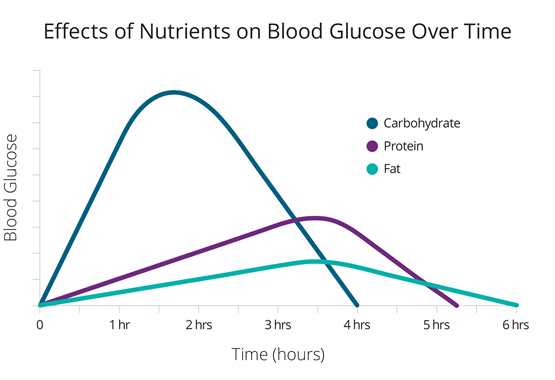Carbohydrate counting is a method for estimating the carbohydrate in food to effectively balance the carbohydrate you eat with your insulin doses. Read more to see how carbohydrate counting and insulin pump therapy together can help you balance your food intake and insulin therapy and keep blood glucose levels in a healthy range.
Food is a big part of our lives and also has a big effect on blood glucose. Knowing how to count carbohydrate offers the flexibility of matching your insulin to the carbohydrate in the foods that you eat.
What is carbohydrate counting?
Carb counting is a method for estimating the carbohydrate in food to effectively balance the carbohydrate you eat with your insulin doses. This is a skill that can give you more flexibility in your food choices.
How carbohydrates affect your blood glucose?
Calories in food are derived from three nutrients: fat, protein, and carbohydrate.
Of those three, carbohydrate has the greatest impact on blood glucose. Within minutes of eating any carbohydrate, your blood glucose (BG) levels may start to rise. After 1-2 hours, most carbohydrates are finished being converted into blood glucose and during that time insulin must be available to transport glucose into cells.

How does carbohydrate counting help with insulin dosing?
If you count the carbs you eat and take good notes on how much insulin your body needs for those carbohydrates, you will learn your insulin-to-carbohydrate ratio. This ratio represents
how much insulin your body needs for a set amount of carbohydrate. Keep in mind, this can be different for every person, can vary based on the time of day, and can even change for you over time.
The t:slim X2 Pump uses the settings in your active Personal Profile (your individualized settings for basal rate, correction factor, carbohydrate ratio, and target BG) to calculate the recommended delivery for food boluses and correction boluses based on your target BG. When a total carbohydrate value is entered during bolus programming, your Tandem Pump will consider a recommended bolus.
Carbohydrate counting and insulin pump therapy together match insulin more precisely with carbohydrate ingested than multiple daily injections. It allows more flexibility with food choices and meal timing.
If you don’t already have a Tandem pump, we have a free demo app that will let you try out our pump interface on your Apple or Android mobile device. You can experiment with pump settings, personal profiles, and some practice blousing. You can download the app from here.
Carbohydrate counting can be challenging, but these three questions can help you:
1. What foods contain carbohydrates?
Starchy vegetables: Potatoes, corn, peas, beans
Grains: bread, cereal, rice, pasta
Fruit and fruit juice
Milk and yogurt
Desserts and other sweets
2. How much food am I eating?
Weighing and measuring food using measuring cups and a kitchen scale can help keep carbohydrate counting accurate at home, and help you learn how to estimate for when you are out to eat.
Tools to measure carbohydrate:


3. How many total carbohydrates am I eating?
There are multiple resources to help you estimate carbohydrate in food:
- Printed Materials including food pyramids and nutrition labels
- Software and Apps which can be downloaded onto your computer or mobile device; many are offered with printed material or resource books
- Restaurants and fast-food chains offer nutrition information, which can be found at the restaurants or online
Craving for more? Check out the complete Carbohydrate Counting series:
Carb Counting #1: Food & Blood Glucose
Carb Counting #2: Nutrition Labels
Carb Counting #3: Other Influences
Carb Counting #4: Alcohol
The material provided is for educational and training purposes only, is general in nature, and is not intended to replace the medical advice of your doctor or healthcare provider. You are encouraged to seek advice from a competent medical professional regarding the applicability of any recommendation with regard to your symptoms or condition. It is important that you do not reduce, change or discontinue any treatment without first consulting your healthcare provider.
From time to time, we may pass along: suggestions, tips, or information about other Tandem Insulin Pump user experiences or approaches to the management of diabetes. However, please note individual symptoms, situations, circumstances and results may vary. Please consult your physician or qualified health care provider regarding your condition and appropriate medical treatment. Please read the Important Safety Information linked below before using a Tandem Diabetes Care product.